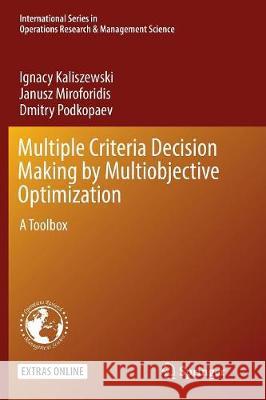Multiple Criteria Decision Making by Multiobjective Optimization: A Toolbox » książka
topmenu
Multiple Criteria Decision Making by Multiobjective Optimization: A Toolbox
ISBN-13: 9783319813622 / Angielski / Miękka / 2018 / 118 str.
Multiple Criteria Decision Making by Multiobjective Optimization: A Toolbox
ISBN-13: 9783319813622 / Angielski / Miękka / 2018 / 118 str.
cena 221,90
(netto: 211,33 VAT: 5%)
Najniższa cena z 30 dni: 212,02
(netto: 211,33 VAT: 5%)
Najniższa cena z 30 dni: 212,02
Termin realizacji zamówienia:
ok. 22 dni roboczych
Bez gwarancji dostawy przed świętami
ok. 22 dni roboczych
Bez gwarancji dostawy przed świętami
Darmowa dostawa!
Kategorie:
Kategorie BISAC:
Wydawca:
Springer
Seria wydawnicza:
Język:
Angielski
ISBN-13:
9783319813622
Rok wydania:
2018
Wydanie:
Softcover Repri
Ilość stron:
118
Waga:
0.21 kg
Wymiary:
23.39 x 15.6 x 0.76
Oprawa:
Miękka
Wolumenów:
01
Dodatkowe informacje:
Wydanie ilustrowane











